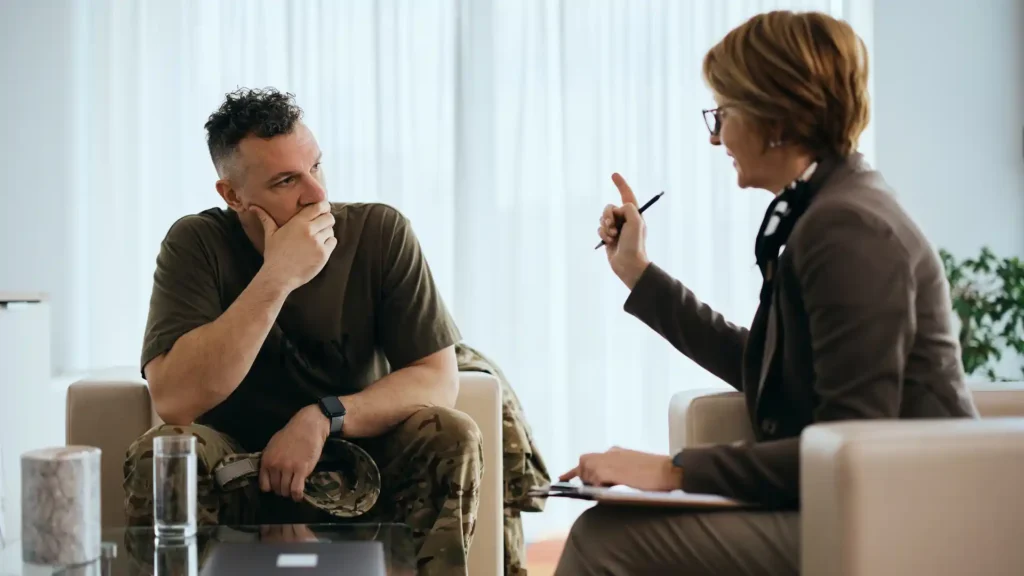Veterans often ask what types of physical therapy are covered by VA benefits – and how to access them. You might be healing after surgery, dealing with a long-term condition, or just trying to stay mobile through the pain. The VA does offer physical therapy, but getting it often depends on a referral, a willing provider, and a system that doesn’t always make things easy.
The good news is that VA health benefits do cover physical therapy. However, eligibility, access, and care coordination all depend on your condition, your disability rating, and the VA medical facility you work with.
Does the VA Cover Physical Therapy for Veterans?
Yes, VA outpatient physical therapy is available through most VA medical centers and community care providers. If a VA doctor recommends physical therapy as part of your recovery or management plan, the VA can cover the cost of treatment, including evaluations, supervised exercises, and ongoing rehab.
The VA provides physical therapy for a wide range of conditions, including:
- Musculoskeletal injuries and chronic pain
- Post-surgical recovery (such as joint replacement or spinal surgery)
- Traumatic brain injury and stroke rehab
- Balance or gait issues
- Neurological conditions such as Parkinson’s or MS
Veterans with service-connected disabilities may qualify for expanded care based on their condition and rating. Some receive long-term rehab at VA hospitals, while others access short-term therapy through the VA Community Care Network.
Most physical therapy falls under standard VA medical services coverage, but you need a referral to get started. Without it, the VA won’t pay for therapy – even if you find a provider on your own.
How to Access Physical Therapy Through the VA
To receive physical therapy through the VA, you must first qualify for VA health benefits eligibility. Most veterans with an honorable or general discharge qualify for VA care, but your service history, income, and current health needs all factor into eligibility.
Once you’re enrolled in the VA system, follow these steps:
Step 1: Schedule an Appointment with Your VA Provider
Your VA primary care provider must evaluate your condition and determine whether physical therapy fits your VA therapy treatment plan. That provider will submit a referral if they believe you’ll benefit from physical therapy or rehabilitation services.
Step 2: Wait for a VA Referral for Physical Therapy
Once your provider submits the referral, the VA will determine where you’ll receive care. Depending on availability, you may go to a VA facility or receive care through the VA Community Care Network, which includes authorized non-VA providers.
You can’t just book a therapy session with an outside clinic and ask for reimbursement. You need a referral and authorization first.
Step 3: Coordinate with VA Scheduling or Community Care
The VA will contact you with scheduling options based on your referral. If you receive care in the community, a veteran care coordination team will help manage appointments, paperwork, and provider communication.
Ask questions during this process. Make sure the provider you’re seeing understands your condition and has access to your records.
Step 4: Review Copayments, If Applicable
Some veterans must pay a small therapy copay for physical therapy visits, depending on their priority group and disability rating. Veterans with a 50% or higher service-connected disability rating generally receive care without copays, but others may need to pay a flat rate per session.
VA Disability and Physical Therapy
Veterans with a service-connected disability often need consistent physical therapy to manage pain, restore function, or prevent complications. If your VA rating includes a musculoskeletal condition or any issue affecting mobility, the VA may cover ongoing therapy as part of your treatment plan.
Common service-connected issues that qualify for rehab include:
- Knee and shoulder injuries
- Chronic back pain
- Joint instability or arthritis
- Nerve compression injuries (such as sciatica or carpal tunnel)
- TBI-related coordination or balance problems
The VA doesn’t always automatically approve long-term physical therapy. If your condition worsens or your therapy needs change, your provider may need to submit updated referrals or documentation to justify continued care.
If your condition has worsened and you need more frequent therapy, you can request a VA disability reevaluation. Save notes from your therapist that show progress, setbacks, and how your condition affects daily life. That documentation can support a claim for increased benefits.
When Physical Therapy Is Part of a Larger Recovery Plan
Some veterans need more than physical therapy. They may require a full veteran rehabilitation services plan that includes occupational therapy, adaptive equipment, or home-based care. The VA may cover these services when mobility, independence, or safety becomes a concern.
Talk to your care team about:
- In-home rehab visits
- Durable medical equipment, like braces or walkers
- Custom exercises to prevent future injury
- Access to gyms or VA fitness programs, if available in your region
These options vary depending on your location and eligibility, but they fall under the broader scope of VA health benefits and physical therapy services.
What to Do If the VA Delays or Denies PT Services
 Veterans sometimes face roadblocks when they try to access therapy through the VA. If you received a referral but haven’t heard back, or if your request was denied, ask your provider to follow up. You have a right to understand the reason for any delay or refusal. Common issues include:
Veterans sometimes face roadblocks when they try to access therapy through the VA. If you received a referral but haven’t heard back, or if your request was denied, ask your provider to follow up. You have a right to understand the reason for any delay or refusal. Common issues include:
- Lack of proper documentation in the referral
- Unclear diagnosis or treatment goals
- Missed communications between departments
- Denial due to administrative error
You have the right to request a new referral, appeal the decision, or file a complaint if the VA mishandled your case. Organized records and consistent follow-up often lead to better results.
If your physical therapy needs relate directly to a service-connected disability, you may also have grounds for a VA claim or appeal tied to your condition. A denied referral or disruption in therapy could support a larger claim if it impacts your recovery, mobility, or quality of life.
Get Support That Helps You Heal
Physical therapy can play a significant role in your recovery – but only if the VA approves and supports it. Veterans who understand how the system works stand a better chance of accessing the care they need.
If your therapy request hits a wall or if your current plan doesn’t reflect the severity of your condition, you don’t have to accept it. You can push for better support, stronger documentation, or legal help if needed.
VetLaw helps veterans who struggle to access the disability benefits they earned. Whether you’re seeking therapy, a rating increase, or full rehab support, we’re here to make sure your health needs don’t get overlooked. Reach out to us today at (336) 355-8387 to get started with a consultation.







